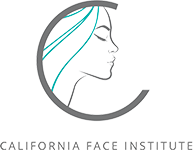The concept of nonsurgical skin tightening is something that we all hope to achieve in the field of Facial Plastic Surgery. Patients often ask about noninvasive or minimally invasive options available to address loose and lax skin and tissue. In this blog post, I would like to discuss the scientific basis behind these therapies and the different treatment modalities that are available today.
Nonsurgical skin tightening of any type is based on dermal thermal damage, or in other words, heat-induced damage to the deeper layers of the skin. This thermal injury is thought to release heat shock proteins which are responsible for some of the tightening effects seen. The devices currently in use fall into one of three groups – radiofrequency, light-based, and ultrasound.
Radiofrequency devices used for skin tightening are based on radio waves which are measured in megahertz (MHz). Various devices use different frequency waves and are either bipolar (both electrodes are at the treatment site), or unipolar (the return electrode is located some distance away). Some devices also have far greater energy than others and power differences are common between different manufacturers. There have been significant modifications and improvements since Thermage (Solta), the first of this type of device hit the market. New devices have improved efficacy and decreased complications but different patients do tend to have different degrees of treatment response.
Light-based devices include long pulse width IPL (intense pulsed light) devices. Though light-based nonablative treatments have existed for many years, these are unable to lead to significant skin tightening due to the limited pulse width. The Titan (Cutera) and SkinTyte (Sciton) circumvent this issue by using a very long pulse width in the range of several seconds. The wavelength of light delivery varies between these devices but they share an integrated heating and cooling cycle. Just like with radiofrequency devices, treatment response tends to be variable in different patients.
Ultrasound-based devices use small ultrasonic thermal bursts to target the treatment area. The first FDA approved device was Ulthera and was initially approved for brow elevation. Experience in Europe suggests that it effectively tightens of the SMAS (deeper facial tissue layer) and platysma bands in patients desiring facial rejuvenation.
There are many options available in the market for nonsurgical skin tightening. These are used for patients with lax facial or body skin who have residual laxity after surgery or who desire a less invasive option.
I hope that this blog post provides the basis to better navigate your way around the plethora of devices that are out there. Please do not hesitate to contact me either through this website or through social media with any further questions.

